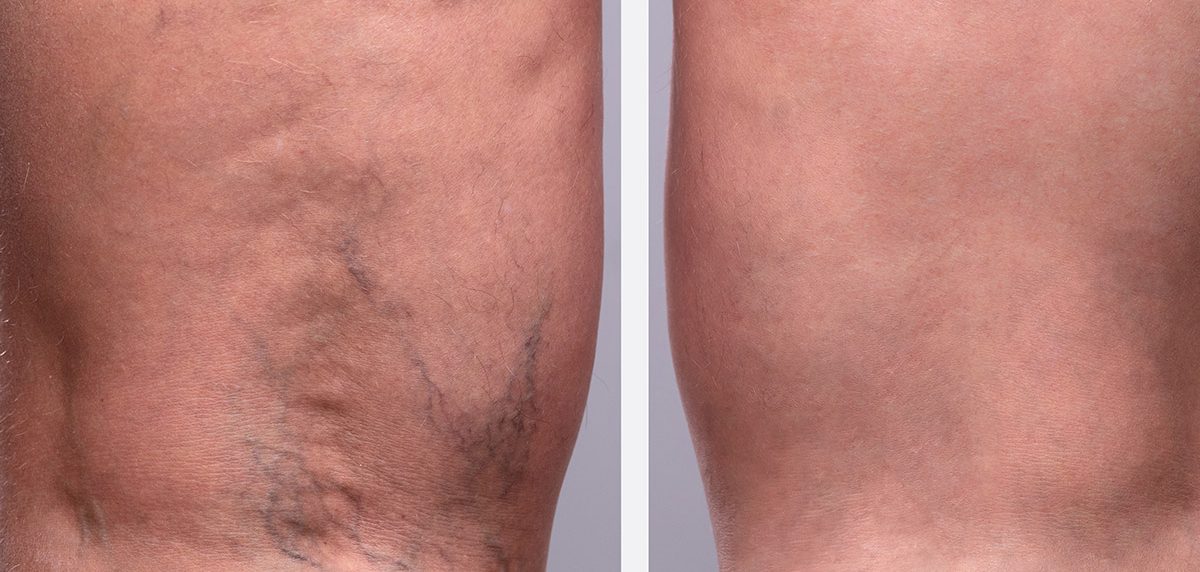Chronic venous insufficiency (CVI) is a condition that develops when one of your veins has an inadequate ability to return blood from the lower body back up to the heart. This condition most commonly affects adults, but can also affect teenagers and children.
People with chronic venous insufficiency may have mild symptoms or more severe symptoms. CVI can be broken down into three stages: pre-symptomatic, evident, and end-stage CVI. Each stage presents its own set of challenges for those suffering from it. Recognizing these stages early on helps you take the steps to prevent further complications and improve your quality of life.
Pre-symptomatic chronic venous insufficiency or early venous insufficiency
The first stage of chronic venous insufficiency is pre-symptomatic. This means that someone has CVI and is not yet experiencing any symptoms. However, there are still some warning signs to look out for. For example, a person may feel like they have heavy legs or have difficulty standing up from a sitting position. To prevent the progression of CVI to more severe stages, the first line of defense against the condition is lifestyle changes such as avoiding long periods of standing or sitting, wearing compression stockings, and elevating your legs when you can.
Evident chronic venous insufficiency
The second stage of CVI is the evident phase, a stage where many people start to experience symptoms. In this stage, sometimes referred to as the early stages of venous insufficiency, the veins in the legs are damaged and start to swell. This can cause a feeling of fullness or aching in the leg or ankle area. The veins will also be enlarged, turn red, and may exhibit spider veins or varicose veins on the skin. There also may be dark spots on the lower legs.
End-stage chronic venous insufficiency
End-stage chronic venous insufficiency is the most severe stage of CVI. It includes symptoms like swelling and ulceration of the leg, skin discoloration, and spontaneous tissue breakdown. In some cases, end-stage CVI can lead to life-threatening blood clots or a pulmonary embolism. If you’re experiencing any symptoms that are consistent with end-stage CVI, it’s important to seek medical attention as soon as possible. Treatment options for end-stage CVI include vein surgery techniques (e.g., stripping) and leg elevation techniques (e.g., sequential compression devices).
Chronic venous ulcers and venous stasis ulcers
Symptoms of chronic venous insufficiency can be hard to identify. One symptom of the condition is a skin ulcer that develops on the lower extremities, typically on the feet or ankles. This type of ulcer is also called a chronic venous ulcer or venous stasis ulcer. These occur when blood flow becomes sluggish in the veins, causing fluid to pool and tissue death to occur. In most cases, these are non-healing wounds that may have been present for months or years before they’re identified as CVI symptoms.
Other complications of chronic venous insufficiency
On top of the signs and symptoms mentioned above, there are a few other complications that can be associated with chronic venous insufficiency. These include:
- Poor circulation in the legs
- Swelling in the feet or legs
- Varicose veins
- Ulcers on the skin
- Pain when moving your legs
- Bloody or brownish-black fluid draining from varicose veins in the leg
Chronic venous insufficiency is the most common of the venous insufficiency syndromes and can affect anyone at any age. The symptoms of chronic venous insufficiency are non-specific, which means that signs and symptoms may vary from person to person. Some people with chronic venous insufficiency experience no symptoms at all, meaning that it can be difficult for the condition to be diagnosed. Chronic venous insufficiency may also cause complications such as chronic venous ulcers and deep vein thrombosis. The stages of chronic venous insufficiency are pre-symptomatic, evident, end-stage, and chronic venous ulcers.
San Diego Vein Specialists
If you are concerned about your vein health or are dealing with Chronic venous insufficiency changes, you should speak to a vein specialist for a consultation.
If you suffer from varicose veins or spider veins, we typically recommend considering having a procedure done to cure the problem altogether by getting rid of the veins. If you are considering such a procedure, contact Kafri Wellness Clinic to schedule an evaluation and get more information.
At Kafri Wellness Clinic, we have over 25+ years of experience working with patients to address vein issues. We also take into consideration a cardiovascular approach to your treatment to give you as much insight into your health as possible.
If you’d like to schedule a consultation to learn how we can help you, please contact us today!




